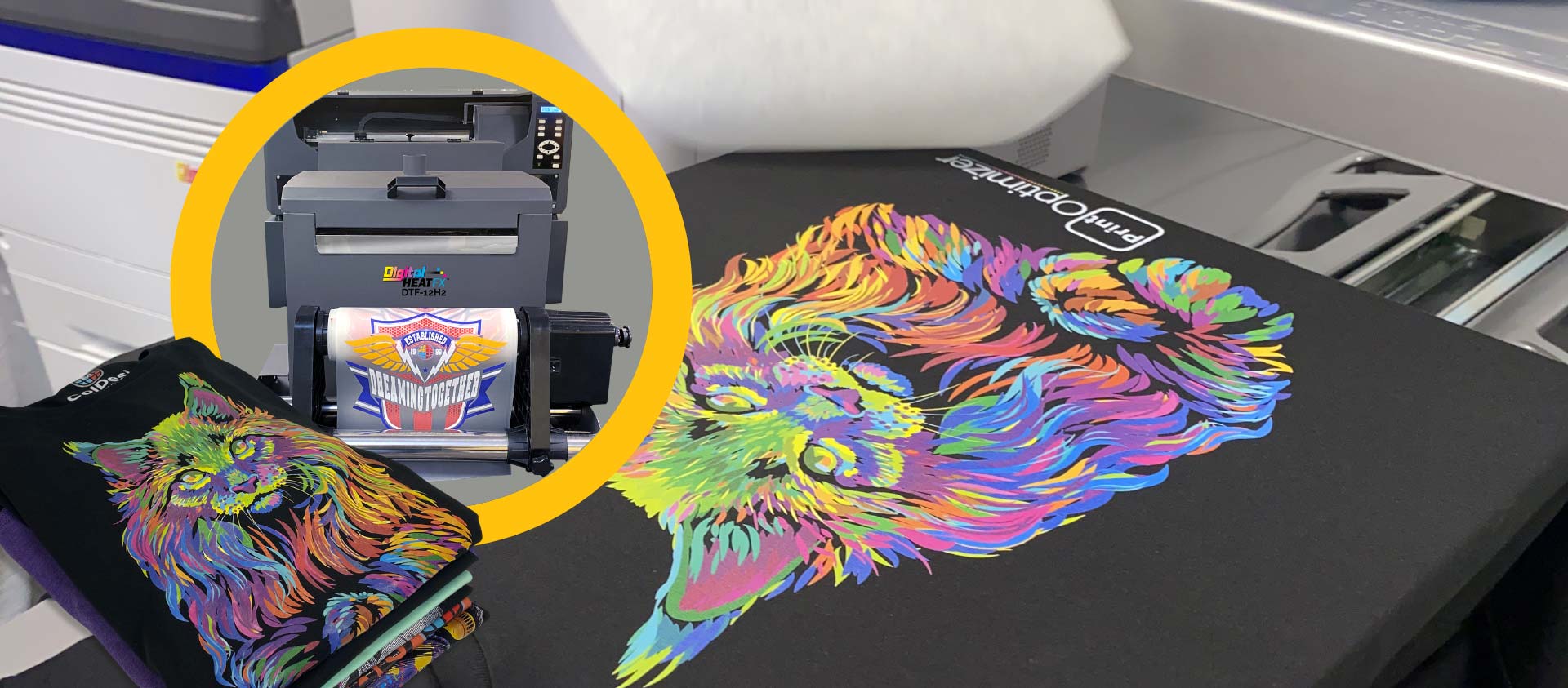The Ultimate DTF Printing Guide: Methods, Materials, and Applications
The Ultimate DTF Printing Guide: Methods, Materials, and Applications
Blog Article
Grasping DTF Printing: Idea for Achieving Vibrant and Durable Prints
In the globe of fabric printing, accomplishing durable and lively prints is a coveted ability that can boost the top quality of your output. Grasping DTF (Straight to Film) printing needs a mix of technological knowledge, precision, and attention to detail. From picking the right materials to adjust print setups and perfecting post-printing completing strategies, there are numerous elements that can affect the end result of your prints. Understanding how to browse these details can make all the difference between an average outcome and an absolutely exceptional one.

DTF Printing Basics
For those brand-new to the globe of textile printing, recognizing the basics of DTF printing is important to mastering this ingenious method. Direct to Movie (DTF) printing is a modern-day technique that includes moving styles from an unique movie onto numerous textiles utilizing a heat press. Unlike conventional methods like display printing, DTF supplies benefits such as vivid shades, elaborate detailing, and the capacity to print on varied materials like cotton, polyester, and blends.
The process starts by printing the style on a special DTF movie utilizing a suitable printer with CMYK or CMYKW ink collections. Once the layout is printed, it is after that cured with a warmth press to produce a durable and resilient print. DTF printing is understood for its ability to replicate complex styles with high accuracy and color precision, making it a popular selection for companies aiming to produce personalized clothing, advertising items, and a lot more.
Choosing the Right Materials

Just as vital is the option of the glue powder. The sticky powder functions as a bonding representative between the published style and the material, so it should have solid bond homes to ensure a durable and lasting transfer. Various textiles might need different kinds of glue powders, so it is critical to match the powder to the textile kind for ideal results - DTF Printing. By carefully picking the appropriate products for DTF printing, printers can enhance the quality, vibrancy, and long life of their prints.
Optimizing Publish Settings
When aiming to achieve the finest outcomes in DTF printing, thorough attention to optimizing print settings is vital for ensuring accurate and top notch transfers onto textiles. One essential element to think about when maximizing print setups is the resolution.
While enhancing the speed can boost performance, it might compromise the final print's clearness and shade saturation. Exploring with various speeds and observing the outcomes can assist figure out the optimum setup for each print job.
Additionally, tweak shade profiles and guaranteeing correct shade monitoring are essential for attaining accurate and constant shades throughout various prints. By adjusting shade setups and accounts, printers can decrease shade inconsistencies and generate consistent outcomes, enhancing the general print high quality and consumer complete satisfaction.
Preparing Art Work for DTF Printing
Transform the artwork to CMYK color setting to guarantee that the shades convert accurately from display to print. Bear in mind to mirror the final layout prior to printing to make sure that it transfers properly onto the garment. By adhering to these steps and paying close attention to the information, you can prepare artwork that is official website maximized for dynamic and sturdy DTF prints.
Post-Printing Finishing Strategies
Executing efficient post-printing completing strategies is important to boosting the sturdiness and aesthetic charm of DTF prints on fabrics. Once the printing procedure is full, using heat to the printed design is crucial (DTF Printing). Heat not only help in curing the ink however likewise makes certain that the shades are long-lasting and vibrant. A warmth press maker evaluated the recommended temperature level and stress setups can assist achieve optimal outcomes.
After warmth pressing, peeling off the pet dog movie very carefully is an essential step. This process should be done gradually and gradually to avoid any damage to the print. As soon as the film is gotten rid of, the print might need additional treating time to even more establish the ink right into the textile. This step helps boost the washability and toughness of the print, ensuring it can hold up against numerous wash cycles without fading or cracking.
In addition, cutting any excess movie around the design can provide the last print a specialist and clean appearance. Putting in the time to appropriately complete DTF prints post-printing can dramatically impact the general quality and durability of the fabric layout.

Verdict
Finally, grasping DTF printing needs a thorough navigate to this website understanding of the fundamentals, picking ideal materials, optimizing print setups, preparing art work effectively, and using post-printing ending up strategies. By following these ideas and methods, one can accomplish lively and durable prints that satisfy their wanted top quality criteria. Consistent practice and attention to detail are vital in accomplishing effective results in DTF printing.
From choosing the ideal products to make improvements print setups and perfecting post-printing completing methods, there are many factors that can influence the outcome of your prints. Unlike conventional techniques like display printing, DTF provides advantages such as dynamic shades, detailed detailing, and the ability to print on diverse materials like cotton, polyester, and blends.
Once the design is printed, it is after that healed with a warmth press to produce a long-lasting and sturdy print.When intending to attain the ideal outcomes in DTF printing, thorough focus to maximizing print you could try here setups is critical for ensuring specific and top notch transfers onto fabrics.In final thought, mastering DTF printing calls for a complete understanding of the fundamentals, picking proper materials, maximizing print settings, preparing art work efficiently, and making use of post-printing completing techniques.
Report this page